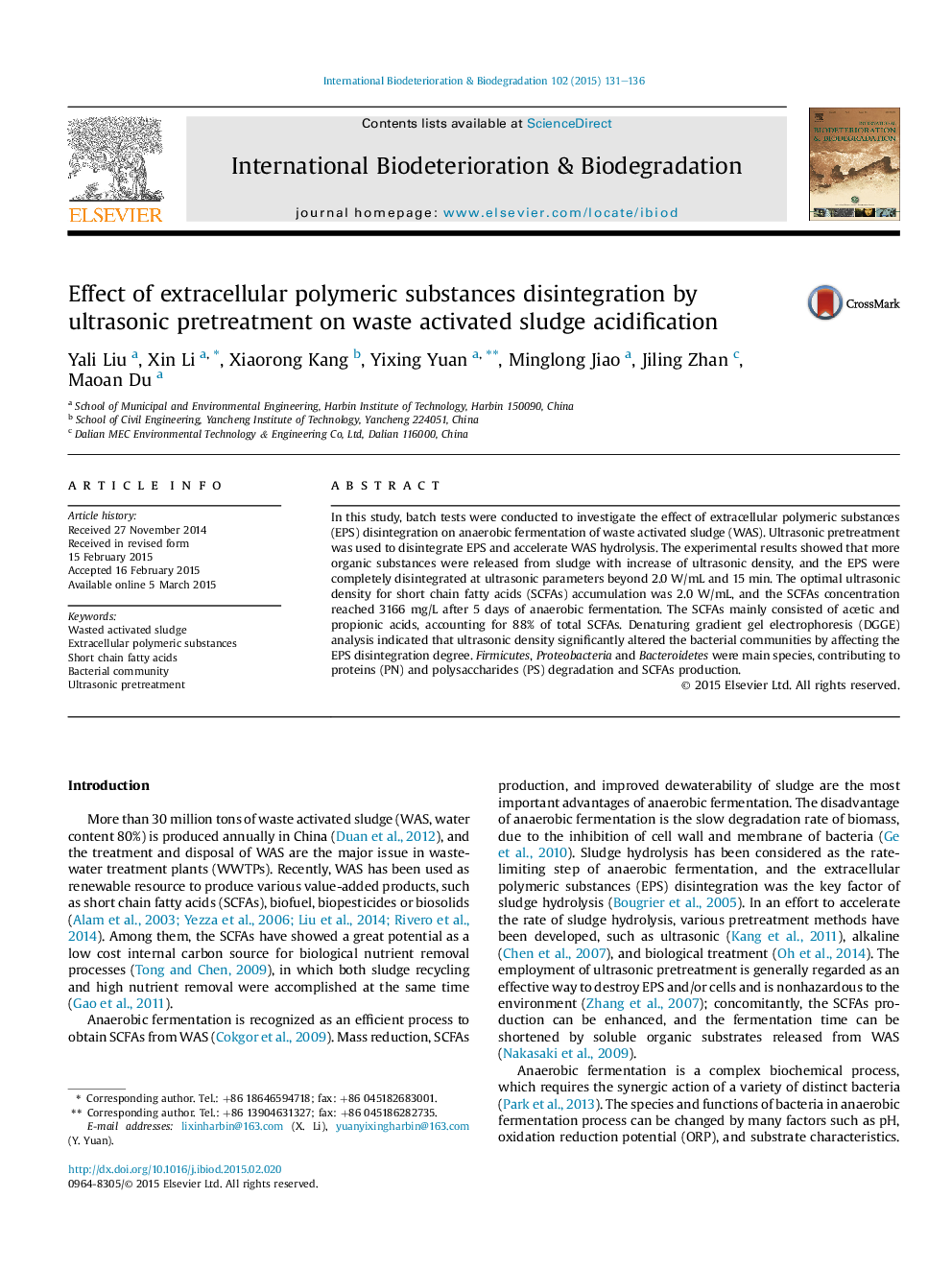| Article ID | Journal | Published Year | Pages | File Type |
|---|---|---|---|---|
| 4364359 | International Biodeterioration & Biodegradation | 2015 | 6 Pages |
•Sludge EPS was completely disintegrated at 1800 J/mL.•The optimal ultrasonic density for SCFAs production was 2.0 W/mL.•Bacterial community structure varied with ultrasonic densities.•Clostridium sp. and Dethiosulfatibacter aminovorans were dominated acidogenic bacteria.
In this study, batch tests were conducted to investigate the effect of extracellular polymeric substances (EPS) disintegration on anaerobic fermentation of waste activated sludge (WAS). Ultrasonic pretreatment was used to disintegrate EPS and accelerate WAS hydrolysis. The experimental results showed that more organic substances were released from sludge with increase of ultrasonic density, and the EPS were completely disintegrated at ultrasonic parameters beyond 2.0 W/mL and 15 min. The optimal ultrasonic density for short chain fatty acids (SCFAs) accumulation was 2.0 W/mL, and the SCFAs concentration reached 3166 mg/L after 5 days of anaerobic fermentation. The SCFAs mainly consisted of acetic and propionic acids, accounting for 88% of total SCFAs. Denaturing gradient gel electrophoresis (DGGE) analysis indicated that ultrasonic density significantly altered the bacterial communities by affecting the EPS disintegration degree. Firmicutes, Proteobacteria and Bacteroidetes were main species, contributing to proteins (PN) and polysaccharides (PS) degradation and SCFAs production.
